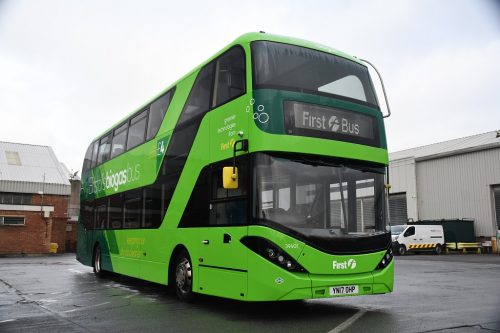
Rich Northey, Engineering Director at First West of England, explains to Jade Smith what improvements have recently been made to the engineering side of the business, where the focus is now on greener bus operations
Prior to working at First, Rich Northey, Engineering Director at First West of England, spent 30 years in the army starting as an apprentice and working his way up to WO1 (Warrant Officer Class 1) as an engineer and later was commissioned as an Officer within the Royal Electrical Mechanical Engineers (REME). In 2006 he left the army and came to First Bristol, Somerset & Avon, as it was then known.
“I came in as the quality and performance manager for engineering,” Rich said. “I’d previously spent time fixing tanks, trucks, motorcycles and the like. When I arrived here I was made an engineering manager of one of the depots so I could get to know engineering in the bus world. I thought I couldn’t be taught anything new, but I was wrong – this is nothing like anything you would do as an engineer anywhere else, as the day-to-day running of a bus workshop is completely different. There are not many industries where you turn out 190 vehicles every day, 364 days of the year and then there are 28-day inspection cycles.
“In June I was put in post as Engineering Director of First West of England (First WoE). We’ve retitled the business from First Bristol, Somerset & Avon to First WoE and now have moved from two Ops licences to one. The business has changed quite a lot in the last 18 months.
“When I left the army and came into the business 11 years ago, the Engineering Director at the time asked me what I wanted to do. My honest answer was to tell him that I wanted to sit where he was.
“I’ve learnt a lot in the last 11 years and I’m still learning today. It’s a fantastic world to work in.”
Lawrence Hill depot
First WoE has a depot at Lawrence Hill, Hengrove which is south of Bristol, Weston-super-Mare, Bath, a small operating centre in Wells in Somerset which runs 26 buses with a PVR of 23 and Westbury outstation. The latter two are controlled by Bath. Wells is a one pit workshop and two years ago the doors were opened up so it could take double-deckers.[…]
By subscribing you will benefit from:
- Operator & Supplier Profiles
- Face-to-Face Interviews
- Lastest News
- Test Drives and Reviews
- Legal Updates
- Route Focus
- Industry Insider Opinions
- Passenger Perspective
- Vehicle Launches
- and much more!


